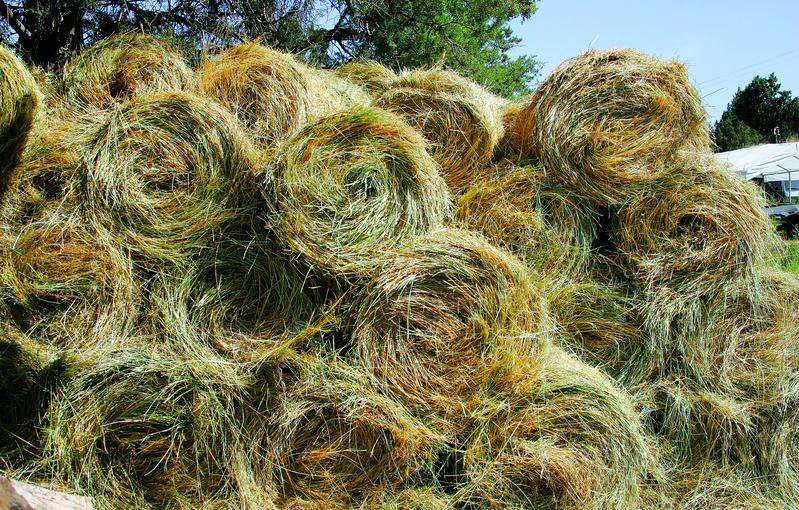Small baler has big benefits
Published 5:00 am Monday, August 7, 2006

- Round bales of hay are stacked neatly at Dancing Cow Farm east of Prine-ville. The 35- to 50-pound bales are considered highly palatable because they are not tightly bound and retain moisture, according to an OSU agronomist.
PRINEVILLE – For Central Oregon’s growing ranks of small-acreage farmers faced with rising equipment costs, the most affordable way to bale hay is to use a pitchfork. But it’s also the most time-consuming.
That’s why Jerre Kosta – owner of 10-acre Dancing Cow Farm east of Prineville with her husband, Sean Dodson – purchased a miniature-sized hay baler online last month. It’s equipment that is more suited to the size of their farm.
Compared with some larger tractors, which can produce bales weighing between 100 and 1,000 pounds, the Japanese-made baler, which cost approximately $6,000, produces round, 35- to 50-pound bales.
Many smaller farms can’t afford larger-sized tractors and hay balers. Larger tractors and balers typically cost $20,000 or more.
Instead, farmers purchase hay from other farmers or farm depots, or bale the hay by hand. The smaller baler, which runs on a smaller-sized tractor costing approximately $14,000, allows farmers to use the hay collected from their own farms to feed their livestock.
”You can toss them up there like a basketball,” Kosta said, pointing to her neat stack of smaller bales.
Because Dodson works full time for a high-tech company and does business around the world, he has seen small operations in England using an Italian-made version of the mini hay baler.
He cited ergonomic and cost advantages as the main reasons for buying the smaller-sized equipment.
”Most balers are designed for big operations,” he said. ”There’s little opportunity for small farmers (to use such big equipment). This is a little less daunting for the average horse owner.”
The labor-saving device works better on small acreages and it bales between 80 and 100 round bundles of hay per hour, Dodson said. It took a day to harvest the farm’s 10 acres, he said.
”It’s significantly less expensive because you only need to buy one tractor,” he said. ”This is the best way I’ve found to do hay in a cost-effective manner.”
During this year’s hay shortage, farmers saw prices rise as high as $150 to $175 per ton.
That’s another reason why Dodson began to look for a more cost-effective way to bale hay.
”A lot of people were desperate,” he said. ”We needed to create our own supply.”
Deschutes Valley Equipment, a local retailer, can order ”miniature equipment,” but does not have enough demand to keep the smaller-sized balers in stock, said Reed Grote, service manager.
”Most of our customers have hundreds of acres and small bales are not efficient (for transportation),” he said. ”But there could be a market there because the market for compact tractors has increased in the last five years.”
Mylen Bohle, an agronomist with Oregon State University, said the hay bales may eventually allow small farmers or groups of farmers to purchase a small baler together and bale their own hay.
”As long as they’re willing to stack small, round bales, it’ll work for them,” he said. ”Because they’re not so tightly bound, they usually produce a higher quality and more palatable hay.”






